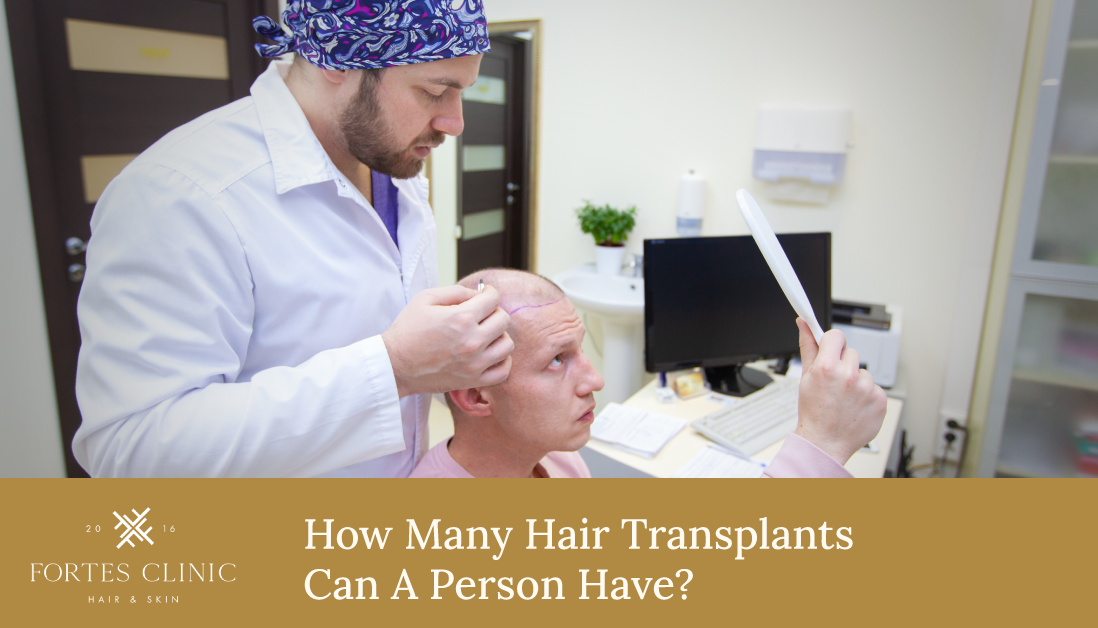Introduction
Hair transplantation has become a popular solution for individuals dealing with hair loss. Whether it’s due to genetics, age, or other factors, many people turn to hair transplants to regain their confidence and achieve a fuller head of hair. However, it’s essential to understand the limits of this procedure and how many hair transplants a person can undergo safely and effectively.
Factors Influencing the Number of Hair Transplants
When considering multiple hair transplants, several factors come into play, influencing the feasibility and success of additional procedures.
Physical Characteristics
Hair Density and Texture
The natural density and texture of a person’s hair play a significant role in determining the number of hair transplants they can have. Individuals with thicker, denser hair may require fewer procedures to achieve satisfactory results compared to those with finer hair.
Scalp Elasticity
Another crucial factor is scalp elasticity, which affects the ability to harvest and transplant hair follicles. Limited scalp elasticity may restrict the number of grafts that can be safely extracted during each procedure, impacting the overall outcome.
Donor Supply
Harvesting Methods
The method used to harvest hair follicles also influences the number of transplants a person can undergo. Traditional techniques like Follicular Unit Transplant (FUT) involve removing a strip of scalp from the donor area, while newer methods like Follicular Unit Extraction (FUE) extract individual follicular units. The choice of technique can affect donor area preservation and subsequent transplant options.
Donor Area Preservation
Preserving the integrity of the donor area is crucial for multiple hair transplant procedures. Over-harvesting can deplete the donor supply, limiting future transplantation possibilities. Skilled surgeons prioritise donor area preservation to ensure adequate grafts for future procedures.
Scalp Condition
Scar Tissue
Previous hair transplant surgeries or other scalp procedures can result in scar tissue formation, complicating subsequent transplants. Scar tissue reduces scalp flexibility and blood supply, making it challenging to achieve optimal results with additional procedures.
Scalp Health
The overall health of the scalp is essential for successful hair transplantation. Conditions like scalp psoriasis or dermatitis can compromise the healing process and increase the risk of complications. Addressing scalp health issues before considering multiple transplants is crucial for optimal outcomes.
Types of Hair Transplant Procedures
Several hair transplant techniques are available, each with its advantages and limitations.
Follicular Unit Transplant (FUT)
FUT, also known as strip harvesting, involves removing a strip of scalp from the donor area and dissecting it into individual follicular units for transplantation. While FUT can yield a high number of grafts in a single session, it leaves a linear scar and requires sutures for closure.
Follicular Unit Extraction (FUE)
FUE involves extracting individual follicular units directly from the donor area using a small punch tool. This minimally invasive technique leaves tiny, dot-like scars that are less noticeable than FUT scars. FUE is ideal for patients who prefer shorter recovery times and minimal scarring.
Ideal Candidate for Multiple Hair Transplants
Before undergoing multiple hair transplant procedures, it’s essential to determine if you’re an ideal candidate.
Prioritising Patient Safety
Patient safety should always be the primary concern when considering additional transplants. A thorough evaluation of the patient’s medical history, scalp condition, and realistic expectations is crucial to minimise risks and maximise results.
Psychological Preparedness
Multiple hair transplants require patience and emotional resilience. Patients must be mentally prepared for the lengthy process and potential setbacks along the way. Realistic expectations and open communication with the surgeon are key to achieving satisfaction with the outcome.
Risks and Complications
While hair transplantation is generally safe, multiple procedures pose additional risks and complications that patients should be aware of.
Potential Risks of Multiple Procedures
Donor Area Depletion
Repeated harvesting of hair follicles from the donor area can deplete the available supply, limiting future transplant options. Surgeons must exercise caution to avoid over-harvesting and preserve donor follicles for future use.
Poor Graft Survival
Each hair transplant procedure carries the risk of graft failure or poor survival rates. Factors such as inadequate blood supply, trauma during implantation, or patient-related factors can affect graft survival. Skilled surgeons employ techniques to maximise graft survival and minimise complications.
Importance of Choosing a Qualified Surgeon
Selecting a qualified and experienced surgeon is paramount when considering multiple hair transplants. A skilled surgeon will assess the patient’s suitability for additional procedures, recommend appropriate techniques, and minimise the risk of complications. Patients should thoroughly research their surgeon’s credentials, view before-and-after photos, and seek recommendations from previous patients.
Recovery and Healing Process
The recovery and healing process following multiple hair transplant procedures require careful attention and adherence to post-operative instructions.
Post-Transplant Care
Medication and Supplements
Patients are often prescribed medications and supplements to promote healing, prevent infection, and support graft survival. Following the prescribed medication regimen and maintaining a healthy lifestyle can enhance the recovery process and improve outcomes.
Follow-Up Visits
Regular follow-up visits with the surgeon are essential to monitor the progress of the transplanted hair and address any concerns or complications promptly. Patients should adhere to the recommended follow-up schedule to ensure optimal results.
Alternatives to Multiple Hair Transplants
For individuals who are not suitable candidates for multiple hair transplants or prefer non-surgical options, several alternatives are available.
Non-Surgical Hair Restoration Options
Non-surgical hair restoration options include topical treatments, oral medications, and low-level laser therapy. While these methods may slow down hair loss and promote hair growth to some extent, they may not provide the same level of coverage and density as surgical transplantation.
Hair Loss Prevention Strategies
Adopting lifestyle changes and practising hair loss prevention strategies can help preserve existing hair and minimise the need for multiple transplant procedures. These strategies may include maintaining a balanced diet, managing stress levels, avoiding harsh styling techniques, and using appropriate hair care products.
Contact our friendly team today for more information on our leading hair transplant treatments in London!



